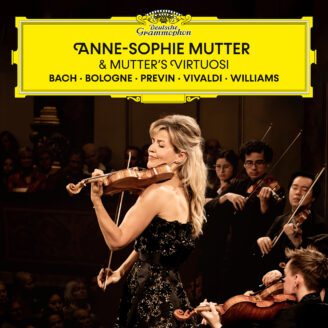Arvo Pärt is by far Estonia’s most famous and distinguished composer; indeed, he was the country’s first composer to achieve world-wide recognition, to the extent that at the moment he could be said to hold cult status as one of the most distinctive and personal voices of contemporary music in the whole world. Before graduating from the Tallin Conservatory in 1963, the previous year he won the first prize at the All-Union Young Composer’s Competition for a children’s cantata and the oratorio Maailma samm ("Stride of the World"). Pärt’s original works have gone through three different stages. His early works exhibited the influence of Shostakovich, Prokofiev, Ligeti, Lutowslawski and Stockhausen, but starting with his First Symphony in 1964, he embraced Schoenberg’s serialist method of composition, with a brief period when he explored the techniques of collage and quotation. These early works exhibit compositional virtuosity and a richness of musical expression, providing exceptional challenge and intensity for the performers and the audience alike.
After several years of creative silence, Pärt devoted himself to the study of Medieval and Renaissance music. Accordingly, the works he has written since the late 1970s tend to revive old polyphonic forms and harmonies, with a marked influence from Gregorian chant. This latest style is also characterized by rhythmic stasis, a predilection for quiet dynamics, open-intervals and conventional triadic harmony. These "Neo-medieval" works are further notable for their austerity, reflective mood, spiritual aura and introspective mysticism, effortlessly combining the old and the new in music that seems to emerge from a timeless vacuum.
When asked to discuss his particular "mature" style of composition, Pärt gives great emphasis to what he terms "tintinnabulation":
"Tintinnabulation is an area I sometimes wander into when I am searching for answers - in my life, my music , my work....The complex and many-faceted only confuses me, and I must search for unity....Here I am, alone with silence. I have discovered that it is enough when a single note is beautifully played. This one note, or a silent beat, or a moment of silence, comforts me. I work with very few elements - with one voice, with two voices. I build with the most primitive materials - with the triad, with one specific tonality. The three notes of the triad are like bells. And that is why I call it tintinnabulation."
Fratres In 1977, Pärt composed Fratres for string quintet and wind quintet; as such, the work was first performed by "Hortus musicus," an Estonian early music ensemble. Since then, Pärt has adapted the work for several different combinations, some versions employing solo instruments and others employing ensembles of varying instrumentation. The work (heard in this performance in the version for solo violin and strings) and its title ("Brothers") suggests a solemn, candlelit procession of medieval monks, on their way to and from mass. Fratres is a direct result of the composer’s preoccupation with medieval music and modalities. Over a continuous, archaic-sounding, open-fifth drone, a compelling, yet soothing chant-like theme is austerely heard over a number of repetitions in the strings. With each repetition, the soloist ornaments over the theme and provides variations of simple elegance, eventually soaring with spiritual fervor towards an impassioned climax. As the intensity of the proceedings decreases gradually, all motion ceases and the work concludes in a mood of quiet peace and spiritual tranquillity.
Courtesy of Columbia Artists Management Inc.

